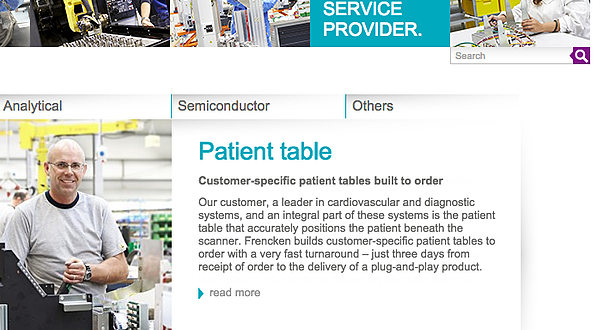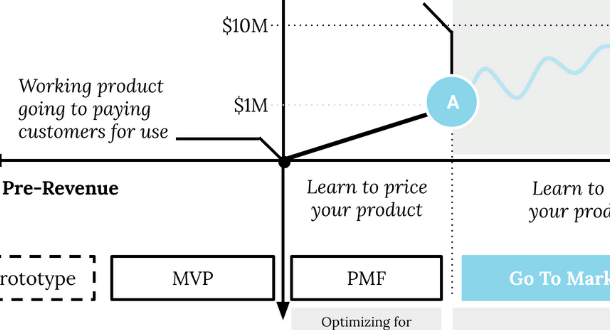Customer Data Platform (CDP): from nice-to-have to need-to-have
A Customer Data Platform (CDP) collects all the customer data in your company in one central place. A promising development, in an era when data is considered the holy grail. Because the more data, the more insight into customer needs. And more opportunities to tailor your offerings accordingly. Because if you do this successfully, you can generate more revenue, increase customer lifetime value and reduce the cost per acquisition.Not surprisingly, therefore, organizations (large and small) are looking into the possibilities of a CDP. What does it take to develop a customer profile and how does a CDP help you do that? What does it take to run a CDP successfully and how does it differ from a Data Management Platform (DMP)?
What is a CDP?
It is a well-known problem: the fragmentation of data and the lack of a unified customer view. The cause is also obvious, each software application uses different data: after all, a CRM contains customer demographic data about customers, the accounting package contains invoice data and the transactional details are found in an ERP system. Often we also work with different marketing tools with which we track customer (online) behavior. The different sources make it labor-intensive to unify this data and (unnecessarily) complex to form a good customer profile. This creates not only fragmented data, but also a fragmented picture of the customer. This is because each department has insight into only a small piece of the customer journey.
The result? That the sales department knows, for example, that they have sold climate control solutions to healthcare institutions, but after a while they no longer know exactly which installations have been installed. Annoying, when your customer calls after some time with a question. In turn, the installer doesn't know exactly what was discussed during the service appointment, so he (and the customer) may be in for surprises during the service call. These are situations that make no one happy and that you want to prevent.
Let that be exactly what a CDP does, namely by integrating data and making it available to the parties involved. Because you collect all customer data centrally in a CDP, business intelligence techniques allow you to get a better picture of customer needs. This is also called a "360-degree customer view. This customer view helps both marketing, sales and service departments to serve the customer in the best possible way.
From nice-to-have to need-to-have
The demand for Customer Data Platforms is growing rapidly. The average SaaS company uses more than 80+ tools in its operations. And that number is still growing every year. This growth also results in an increase in customer data and, therefore, the need to synchronize them with each other. If you don't, an incomplete customer view is inevitable. According to IBM research, bad data costs the United States about $3 trillion a year. How much it costs the Netherlands we do not know exactly, but one thing is certain: the customer experience does not improve, and that realization is starting to sink in more and more in the business world.
Benefits of a CDP
So poor data quality, or not making the most of it to the customer's benefit, can have quite an impact. Because we have more and more data at our disposal, it is also not a question of whether companies will change, but when. The main reason is that central management of customer data ensures that you get more return from your existing customer data. Those who do this effectively see this reflected in:
- Higher conversion rates
- Lower cost per acquisition
- Higher turnover
- More repeat purchases
- and higher Customer Lifetime Value.
A Customer Data Platform offers you a number of advantages:
Data in your own hands
Data is not the only thing that has become fragmented in organizations, many an IT landscape consists of a motley collection of systems. All have their own qualities and functionalities. And all have data. The advantage of a central database is that you keep the data in your own hands, no matter what happens with the various software applications. So you don't run the risk of losing customer data when you replace old software with new software.
Insight into customer needs
Generating data during the customer journey and merging this information from different systems leads to new insights. Take, for example, recording frequently asked questions during the purchase or implementation process. If you track this structurally, you can notice certain trends or similarities over time. Imagine you're selling a software application, and there's a lot of demand for a particular interface with other systems. This insight can lead you to proactively offer the link yourself during the sales process.
Increase relevance
In a CDP you can combine and enrich data, enabling you to segment and personalize better. Think not only of personalized e-mails, but also of recommendations for content or products on the website.
More effective marketing and sales
Ultimately, only one thing counts, and that is the result. With effective use of data, you can significantly reduce your cost of acquiring a new customer and increase revenue per customer. And revenue? They are on the rise: the ROI from personalization is 6-8 times the investment and can be as much as 10% extra sales(McKinsey & Company). Part of this comes from higher customer lifetime value; so you can better serve your existing customers as well.
CDP versus Data Management Platform (DMP).
A Data Management Platform (DMP) is often mentioned in the same breath as a CDP, which is not surprising, because a DMP also collects customer data. The difference, however, is that a DMP only works with third-hand or anonymized data. This includes, for example, IP addresses, the type of device someone uses and data from cookies. You build this information before the customer identifies himself to you by name. You can also use this information to create profiles, for example to apply segmentation in your advertising strategy.
A CDP processes multiple types of data. The starting point is always the customer data collected by the organization itself. This first-hand information can be enriched in a CDP with additional second- or third-hand data. CDPs are used to store all this data in one place and use it for personalized marketing strategies. Cross-channel, so for example via e-mail, ads, the website and mobile.
CDPs and DMPs are thus very similar, but in a CDP multiple types of data are processed and there is a broad marketing focus instead of just advertising.
DMP and CDP in practice
Do you ever wonder how it is possible that a website shows the branches in Brabant, just when you are in the Den Bosch region? That can already be done with the data usually collected in a DMP. The website knows where you are based on your IP address and adapts its content accordingly. Are you also addressed by your name and receive personalized offers? Then that is data that is generally accessed from a CDP. The better the website gets to know you better, the more relevant the recommendations and the more likely you are to convert (again).
What to consider when purchasing CDP software are there?
The search for an appropriate Customer Data Platform can be a bit overwhelming. There are dozens of parties offering CDPs, with costs ranging from a few hundred to about a thousand euros per month. How do you separate the wheat from the chaff and choose a CDP that suits your needs?
One of the important considerations when selecting a suitable solution is the number of integrations with which you can link your CDP. The more customer data you can integrate into your platform, the more complete the customer view on which you base your commercial approach. So the key question in this one is: can the CDP be interfaced with your applications? If so: great! If not, there is no immediate cause for concern. However, an important question to ask is what is needed to get the data into the CDP after all.
HubSpot integration with CDP
HubSpot allows you to centralize all your customer data. In fact, HubSpot easily links to your email marketing tool, calendar, website software, CRM, ABM tooling, and so on. In fact, many CDPs have a ready-to-use interface with HubSpot, and if not, a HubSpot partner can help you with custom integrations.
CDPs are specialized packages, each with a slightly different approach. For example, there are specific packages for B2B or e-commerce. Are you curious about which CDP best suits your situation? Then contact us and we will gladly think with you.

Want to get the most out of HubSpot? Subscribe to our newsletter, follow us on LinkedIn, or attend our HubSpot User Days!
Explore HubSpot User DaysShare this
You May Also Like
These Related Stories

Dutch B2B companies have been asleep for 15 years

Why it's best to look to your customers (too) to drive growth.


